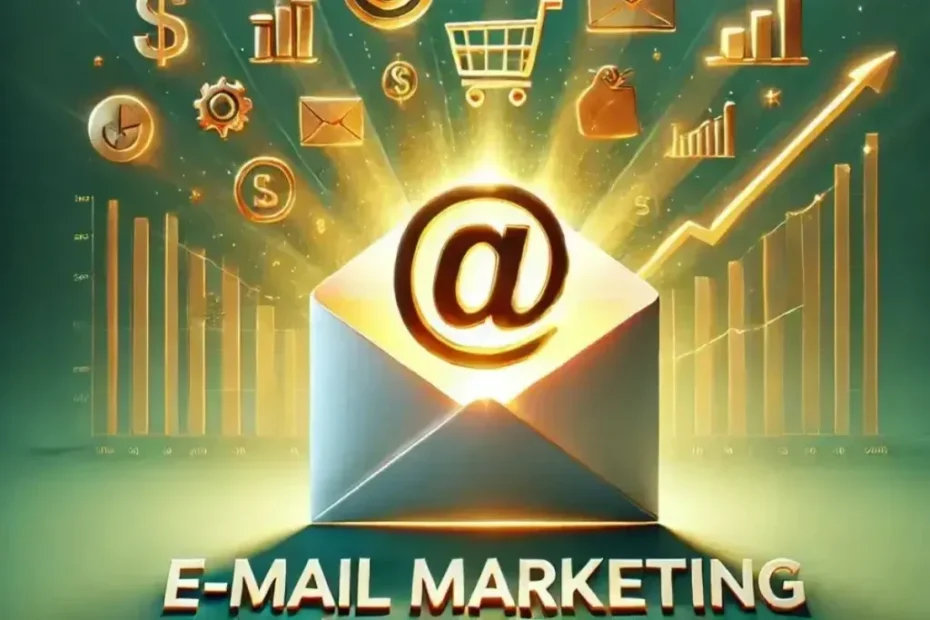Email marketing is one of the most effective tools in affiliate marketing.
It allows you to connect directly with your audience, build trust, and drive conversions.
Whether you’re just starting or looking to improve your results, this guide will show you how to create email campaigns that truly work.
Why Email Marketing Matters in Affiliate Marketing
Email marketing is powerful because it puts you in control.
Unlike social media platforms, where algorithms decide what your audience sees, email lets you communicate directly with your subscribers.
For affiliates, this means more opportunities to share valuable content, promote products, and drive sales.
Plus, email marketing boasts one of the highest ROIs in digital marketing.
It’s the perfect way to grow your affiliate business.
Building a High-Quality Email List
Your email list is your greatest asset.
But quantity doesn’t beat quality.
Focus on attracting people who are genuinely interested in what you offer.
- Use Lead Magnets: Offer something valuable like a free guide, checklist, or discount in exchange for an email address.
- Add Opt-In Forms: Place forms on your website, blog, or landing pages. Make them simple and enticing.
- Leverage Social Media: Promote your email list on platforms where your audience spends time.
Start small, but make every subscriber count.
Read also: Top 10 affiliate marketing strategies to increase sales.
Understanding Your Audience
To create campaigns that convert, you need to understand your subscribers.
Ask yourself:
- What are their pain points?
- What solutions are they searching for?
- What kind of emails would they open and click?
Use tools like surveys or polls to gather insights.
Segment your email list based on interests or behaviors.
For example, if you promote fitness products, you might segment by beginners and advanced users.
This ensures your content feels personal and relevant.
Writing Engaging Subject Lines
Your subject line is the first thing subscribers see.
Make it count!
- Be Specific: “10 Fitness Tips for Busy Moms” is better than “Fitness Tips.”
- Create Urgency: Use phrases like “Don’t Miss Out” or “Limited Time Offer.”
- Keep It Short: Aim for 6–10 words.
Avoid spammy words like “Free” or excessive punctuation.
Test different styles to see what works best for your audience.
Crafting Content That Converts
Once your email is opened, the content must deliver value.
Here’s how to craft emails that drive action:
- Start Strong: Grab attention with a personal greeting or relatable question.
- Focus on Value: Offer tips, advice, or solutions before mentioning a product.
- Include Clear CTAs: Tell readers exactly what to do next, like “Click here to learn more.”
Balance your emails.
If you’re always selling, subscribers will tune out.
Mix educational content with occasional promotions.
Designing Your Emails for Maximum Impact
Appearance matters.
A clean, mobile-friendly design can make all the difference.
- Keep It Simple: Use clear headings, short paragraphs, and plenty of white space.
- Use Visuals Wisely: Add relevant images or GIFs to break up text.
- Optimize for Mobile: Many people check emails on their phones, so test your design on all devices.
Tools like Canva or pre-built templates from Mailchimp make this process simple, even for beginners.
Timing and Frequency of Emails
When you send emails matters as much as what you send.
- Best Times: Test sending emails in the morning or evening when people are more likely to check their inbox.
- Frequency: Aim for consistency without overwhelming subscribers. Start with 1–2 emails per week and adjust based on engagement.
Pay attention to open rates and adjust your timing to match when your audience is most active.
Tracking and Optimizing Your Campaigns
Email marketing isn’t a “set it and forget it” strategy.
Tracking results is essential to improvement.
- Key Metrics: Monitor open rates, click-through rates, and conversions.
- Use Tools: Platforms like Google Analytics or your email service provider offer detailed reports.
- A/B Testing: Experiment with different subject lines, content, and CTAs to see what resonates.
Optimization is an ongoing process.
Learn from your data and refine your approach for better results.
Avoiding Common Mistakes in Affiliate Email Marketing
Even experienced marketers make mistakes.
Here’s what to avoid:
- Spamming Subscribers: Don’t send too many emails or overly pushy promotions.
- Ignoring Mobile Optimization: If your emails don’t load properly on phones, you’ll lose engagement.
- Neglecting Value: Make sure every email delivers something useful to your audience.
Focus on building trust.
Subscribers are more likely to click and convert when they feel valued.
Conclusion
Email marketing is a game-changer for affiliate marketers.
By building a high-quality list, understanding your audience, and creating value-driven campaigns, you can drive more sales and grow your business.
Start small and take consistent action.
Remember: Your email list is your secret weapon.
Nurture it, and it will reward you with long-term success.
What’s your biggest email marketing challenge?
Share it in the comments below!
Don’t forget to subscribe to our blog for more affiliate marketing tips.
Read also: Top 10 best tools for affiliate marketing.
